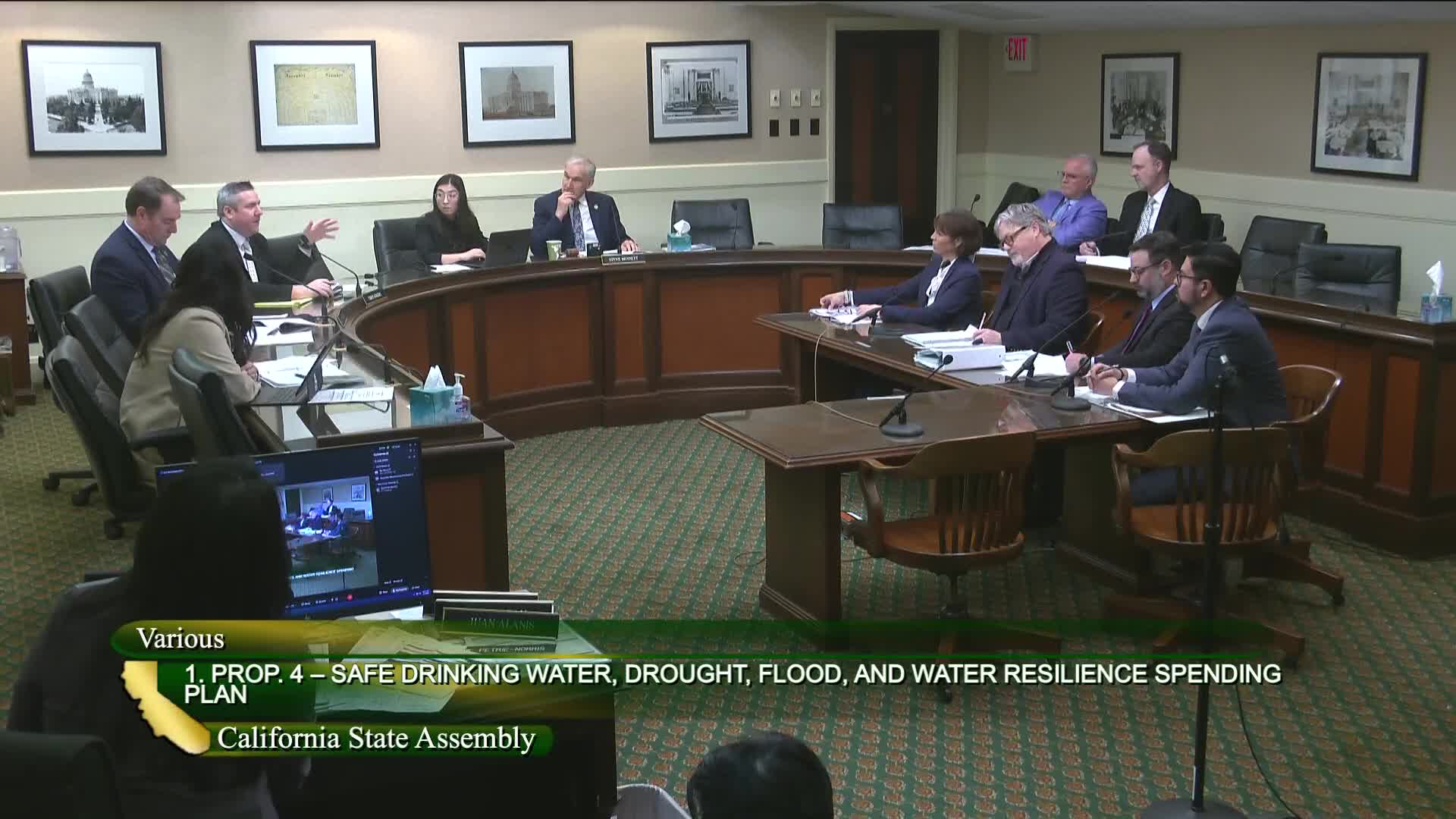California Water Resources identifies 260 high-hazard dams amid safety funding discussion
March 05, 2025 | California State Assembly, House, Legislative, California
This article was created by AI summarizing key points discussed. AI makes mistakes, so for full details and context, please refer to the video of the full meeting. Please report any errors so we can fix them. Report an error »

The Assembly Budget Subcommittee No. 4 on Climate Crisis, Resources, Energy, and Transportation convened on March 5, 2025, to discuss critical issues surrounding water management and dam safety in California. The meeting highlighted the ongoing challenges faced by agricultural communities and the state's efforts to address dam safety concerns.
One of the primary topics was the economic impact of water curtailments on agriculture, particularly in counties like Siskiyou. Assembly members expressed concern over the lack of direct funding from the State Water Resources Control Board to support affected farmers. Although the board acknowledged that it does not have specific programs for economic support, it mentioned that funding is available through the Department of Fish and Wildlife for watershed projects. The board also noted investments in telemetry and water metering to improve data collection related to water rights.
In a related discussion, the subcommittee addressed dam safety, with a focus on the classification of dams that pose significant risks to life and property. Casey Shemki, Deputy Director for Legislative Affairs with the Department of Water Resources, reported that approximately 260 to 265 dams are classified as having extremely high hazards. This classification indicates that while the likelihood of failure may not be higher, the potential consequences of such failures could be severe due to the proximity of homes and infrastructure downstream.
Assembly members questioned the rationale behind a proposed $47 million backfill for dam safety in the governor's budget. Megan Larson from the Department of Finance explained that this funding aims to enhance budget resiliency for dam safety initiatives.
The discussions underscored the state's commitment to addressing both agricultural and infrastructure challenges as California navigates its climate crisis and resource management strategies. The subcommittee's ongoing efforts will be crucial in ensuring the safety and economic stability of communities reliant on these vital resources.
One of the primary topics was the economic impact of water curtailments on agriculture, particularly in counties like Siskiyou. Assembly members expressed concern over the lack of direct funding from the State Water Resources Control Board to support affected farmers. Although the board acknowledged that it does not have specific programs for economic support, it mentioned that funding is available through the Department of Fish and Wildlife for watershed projects. The board also noted investments in telemetry and water metering to improve data collection related to water rights.
In a related discussion, the subcommittee addressed dam safety, with a focus on the classification of dams that pose significant risks to life and property. Casey Shemki, Deputy Director for Legislative Affairs with the Department of Water Resources, reported that approximately 260 to 265 dams are classified as having extremely high hazards. This classification indicates that while the likelihood of failure may not be higher, the potential consequences of such failures could be severe due to the proximity of homes and infrastructure downstream.
Assembly members questioned the rationale behind a proposed $47 million backfill for dam safety in the governor's budget. Megan Larson from the Department of Finance explained that this funding aims to enhance budget resiliency for dam safety initiatives.
The discussions underscored the state's commitment to addressing both agricultural and infrastructure challenges as California navigates its climate crisis and resource management strategies. The subcommittee's ongoing efforts will be crucial in ensuring the safety and economic stability of communities reliant on these vital resources.
View full meeting
This article is based on a recent meeting—watch the full video and explore the complete transcript for deeper insights into the discussion.
View full meeting
